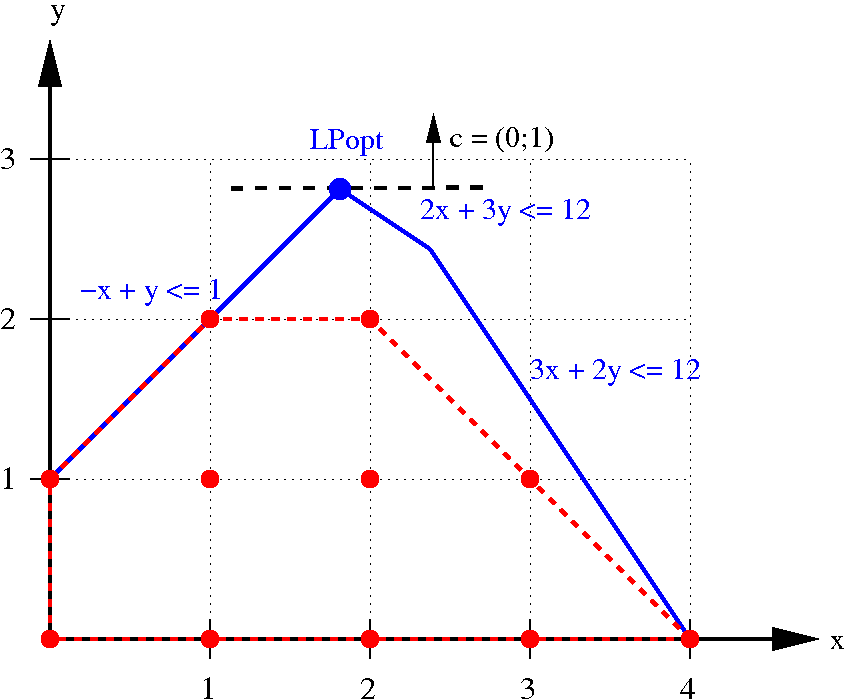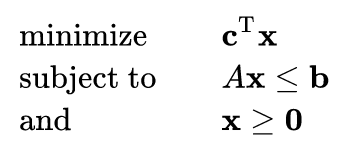Leveraging
linear programming for
pseudo-Boolean solving
Jo Devriendt †, Jan Elffers †, Ambros Gleixner ‡, Jakob Nordström *
† KTH Royal Institute of Technology, Sweden
‡ Zuse Institut Berlin, Germany
* University of Copenhagen, Denmark
jhmde@kth.se
Pseudo-Boolean background
- Pseudo-Boolean (PB) constraint:
- Bounded weighted sum of literals:
- Note:
- Equivalent to 0-1 integer linear programming constraint
- Bounded weighted sum of literals:
- PB formula: conjunction of PB constraints
- PB solvers decide satisfiability of PB formula
- PB formula can be rationally infeasible
- no assignment to interval [0,1] satisfies the formula, e.g.:
- no assignment to interval [0,1] satisfies the formula, e.g.:
- Rationally infeasible implies UNSAT
SAT background
- A clause is a special PB constraint:
-
CNF formula can be rationally infeasible
- But only if unit propagation leads to conflict
- Otherwise, trivial rational solution: assign 0.5 to all non-propagated variables
- All clauses not satisfied by unit propagation have at least 2 unassigned literals
- Such clauses are satisfied by 0.5-assignment
For CNF, deciding rational infeasibility is trivial
Pseudo-Boolean background
- Deciding rational infeasibility of PB formulas is easy in theory:
- Algorithmic complexity class: P [K1979]
- Proof-theoretic complexity: short cutting plane [CCT87] proofs exist [F1902]
- Linear programming (LP) solvers efficiently decide rational feasibility
- In practice, many PB solvers struggle on rationally infeasible formulas [EGNV18]
- Even PB solvers that natively build cutting plane proofs, e.g., RoundingSat and Sat4J
Goal of our work:
use LP solver to check rational feasibility during PB search
Linear Programming (LP) solver
- Input:
- conjunction of linear constraints
- variable bounds
- objective function
- Output: either
- SAT: optimal rational solution
- UNSAT: Farkas multipliers
- defines violated positive linear combination of input constraints



PB search loop
Propagation
Conflict?
Learn PB constraint
Backjump
Decide unassigned variable
yes
no
PB search loop
with LP solver call
Propagation
Conflict?
Backjump
Decide unassigned variable
no
Rational infeasibility?
Query LP solver
yes
no
Learn PB constraint
Extract Farkas multipliers
yes
Learn Farkas constraint
- LP solvers are slow compared to PB search loop
- Limit calls to LP solver
- Limit LP solver running time
- Deterministic measure: compare #conflicts in PB solver to #pivots in LP solver
- Learned constraint must be implied by input formula
- LP solver uses inexact floating point arithmetic
- Recalculate Farkas constraint with exact arithmetic
- Verify Farkas constraint is still conflicting
Two technical hurdles
- PB solver RoundingSat [EN18]
- Native cutting plane proofs
- Performed well in past PB competitions
- LP solver SoPlex [ZIB]
- SCIP's native LP solver
- Fast
- Open source
Working implementation
Experiments!
- 5 solver configurations
- RoundingSat
- RoundingSat+SoPlex
- SCIP
- Sat4J
- Sat4J-CP
- 3000s on 16GiB machines
- 4 benchmark families:
- PB12
- PB16
- MIPLIB
- PROOF

Performance experiment

Performance experiment


Performance experiment

Performance experiment
- RoundingSat+SoPlex never really worse than RoundingSat
- small LP overhead at worst, huge speedups at best
- Not only more solved UNSAT instances (+16%), but also more solved SAT instances (+14%)
- RoundingSat+SoPlex and SCIP trade places
- SoPlex does not like PB12
Performance experiment
Conflict depth experiment

Conflict depth experiment
- Conflict depth for rational infeasibility check and unit propagation are similar
- Technique detects rational infeasibility also in deep search nodes
Learned constraint addition experiment

Learned constraint addition experiment
- Adding learned constraints to LP solver does not lead to more solved instances
- Also no improvement in number of conflicts needed
- Hypothesis 1: no objective function to guide "tight" variant
- Hypothesis 2: rational solution at deep search nodes is not useful
- Other hypotheses?
Conclusion
- Use LP solver to tackle rational infeasibility during search
- Implemented sound integration of LP solver in PB solver
- Experiments indicate small LP overhead at worst, huge speedups at best
Thanks for your attention! Questions?
Future Current work
- Optimization
- LP cut generation
[K1979] A polynomial algorithm for linear programming - 1979 - Khachiyan
[CCT87] On the Complexity of Cutting-Plane Proofs - Cook, Coullard, Turán
[F1902] Über die Theorie der Einfachen Ungleichungen - 1902 - Farkas
[EGNV18] Using combinatorial benchmarks to probe the reasoning power of pseudo-Boolean solvers - 2018 - Elffers, Giráldez-Cru, Nordström, Vinyals
[EN18] Divide and conquer: Towards faster pseudo-boolean solving - 2018 - Elffers, Nordström
[ZIB] SoPlex - soplex.zib.de
References
Leveraging Linear Programming for pseudo-Boolean solving - PoS 19
By Jo Devriendt
Leveraging Linear Programming for pseudo-Boolean solving - PoS 19
- 507



